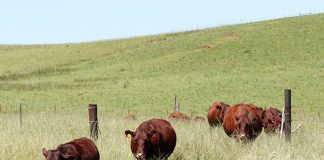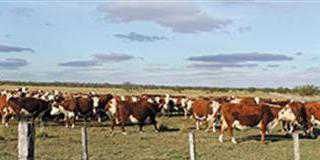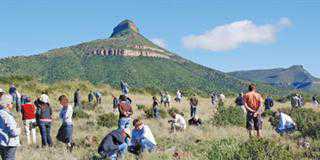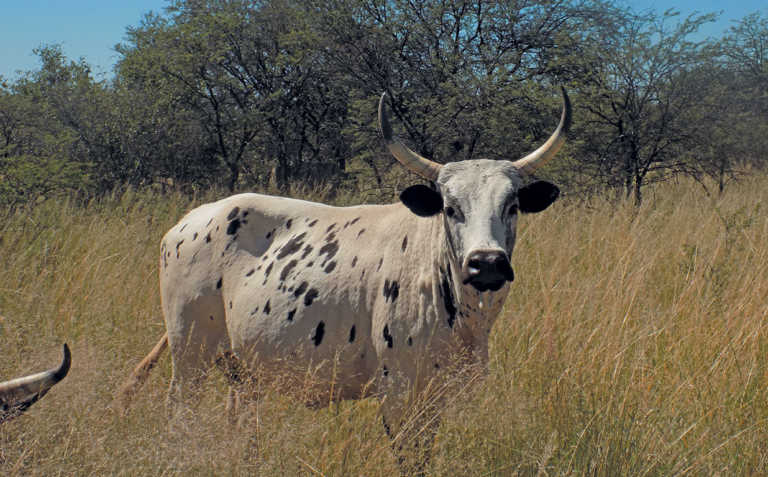
Photo: Annelie Coleman
The Speedy family’s journey towards holistic grazing management started in the 1960s. At the time, the likes of botanist John Acocks, and red meat producer, Len Howell, were championing the counter-intuitive claim that grazing in South Africa was deteriorating because of overgrazing and under-stocking.
“Farmer’s Weekly at the time was filled with correspondence debating the validity, or otherwise, of the claim,” recalls Sandy Speedy.
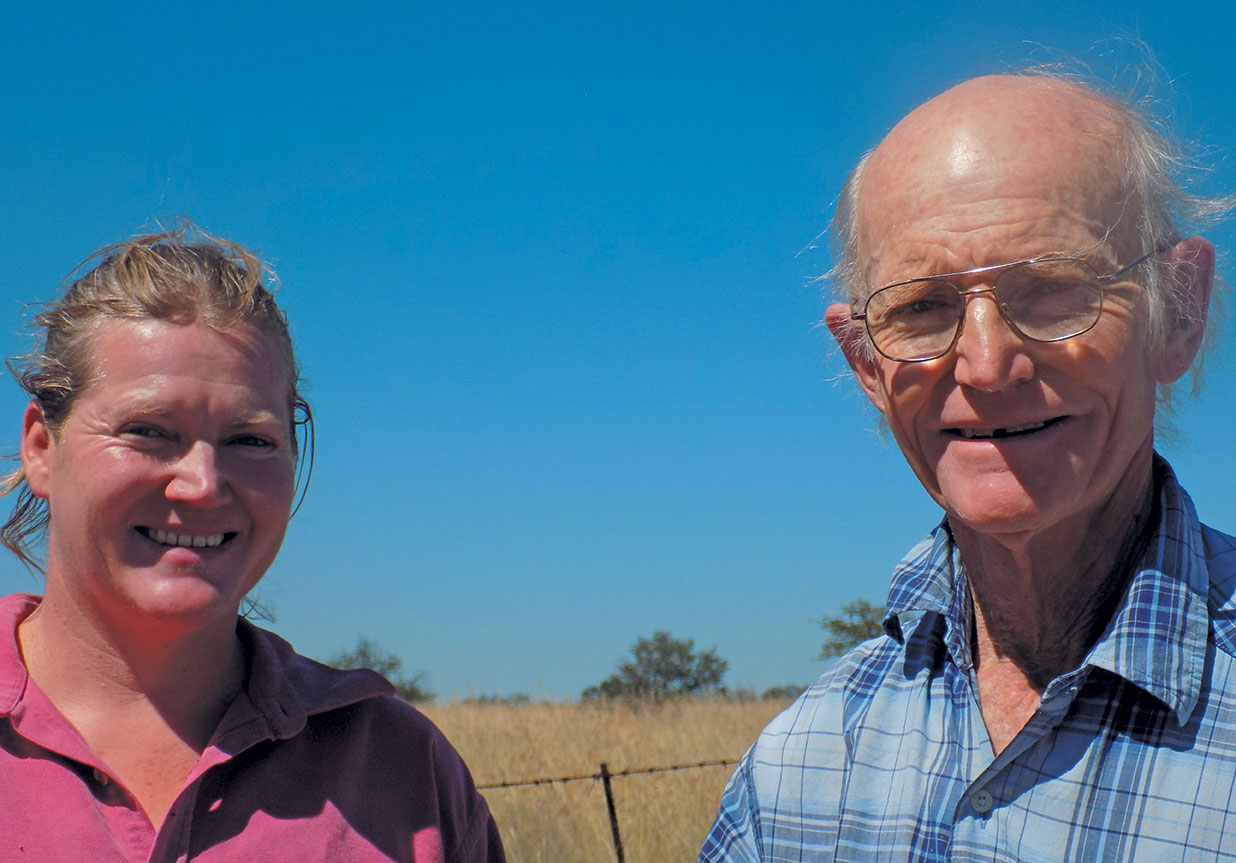
It was at this time that Rhodesian (now Zimbabwe) grassland specialist, Allan Savory, entered the discussion, and gave it new impetus with his concept of holistic grazing management.
“My father and I were convinced this was the way forward,” says Sandy.
After meeting Savory, Sandy began implementing holistic farming practices on his 4 800ha farm, Zoetvlei, between Kuruman and Vryburg.
READ Understanding the red meat classification system
In 1994, Sandy’s daughter, Jennifer, joined the operation, and today the pair run between 1 400 and 1 900 Nguni cattle on the farm.
The land has been divided into 13 grazing cells, which are divided into a total of 250 separate paddocks, averaging 20ha.
The idea is to emulate the grazing patterns that existed in Africa before the free movement of grazing and browsing herbivores was halted.
The breeding season is planned around the March equinox so that calves are born close to the summer solstice.
“Only intense hoof action can restore vegetation and reverse the process of desertification, a major cause of climate change,” explains Sandy.
“Holistic management is a method of managing livestock in rapid rotation to increase greater production sustainably and profitably.”
Since the introduction of this approach, the stocking rate on Zoetvlei has increased from about 1 MLU/6ha to 1 MLU/2,5ha.
In addition, the grass cover has become denser, and the species composition has improved markedly.
Inevitably, the implementation of holistic management on Zoetvlei posed a number of challenges. Most importantly, Sandy had to discover for himself the grazing pressure that was required, the optimal grazing period, and the ideal length of the recovery period.
He also had to learn through trial and error how and when to move the livestock to the correct areas on the farm.
Calving management
Another early difficulty was working out how to keep cow and calf pairs together in a densely packed herd of breeding cows calving on the move. Between 30 and 40 calves are born daily during the peak calving season.
READ How to effectively wean beef cattle calves
This means that a large herd can contain as many as 250 calves younger than a week old.
“It could spell disaster if even a small percentage of the calves are lost due to calving problems. That’s why it’s so important to choose the right breed for the job, such as the Nguni,” says Jennifer.
Watering the herd
To supply water to the constantly moving herd, the Speedys use smaller water reservoirs 4,6m in diameter and 3m high.
This ensures a steady flow to the troughs even if the water levels in the reservoirs are low.
The reservoirs are connected to the troughs with pipes 80mm in diameter, and 50mm ball valves control the flow. Each trough is 4m long, 300mm wide and 200mm deep.
The water is pumped from windmills, mainly by two mono pumps, via a network of plastic pipes. This setup makes it possible to provide water to approximately 1 300 cattle, even in the hot North West summers.
The wagon wheel
The fences radiate out from each watering point like the spokes of a wagon wheel.
In the early days, Sandy was concerned that the narrow triangular pieces leading to the watering areas would be destroyed by trampling. Over the past 30 years, however, exactly the opposite has happened.
“These pieces of land regenerate much quicker than the further reaches of the camps,” he says.
A kraal forms the hub of the wheel. The large herds are moved after a single day, while the smaller herds of heifers and weaners are moved every three to four days.
“In my experience, the cattle like to be moved rapidly,” says Jennifer. “They enjoy the new, fresh grazing. They’ve become so used to the rapid movement that they actually move to the next camp without being herded as soon as the gate is opened.”
To increase stocking rate and improve veld production and condition, selective grazing has to be eliminated as far as possible, and the cattle must be able to utilise all of the available vegetation.
Moreover, the veld should be severely grazed from time to time, which is like “cleaning out the pantry”, Sandy explains.
Ideally, this process should be carried out during dry periods. For all this to work, cattle must be bred for a high relative intake. This is another reason the Speedys changed to smaller-framed, non-selective Ngunis in 2000.
“Calving problems have largely been eliminated since the introduction of the smaller cows, and the small calves are up and about much quicker than those from bigger- framed cows,” notes Sandy.
He and Jennifer were also able to push up the cattle numbers from about 1 200 to nearly 2 000 after the introduction of the smaller-framed animals.
Another advantage of the Nguni lies in its horns: they enable the cattle to open up the bush and reach patches of grazing that would otherwise have remained inaccessible.
Soil restoration
The grazing, defecation, salivation and hoof action of moving herds build up soil, restore vegetation and reverse the effects of desertification.
“My father and I aim to retain the integrity of the soil by using the cattle as ‘a tool’,” says Jennifer.
READ Japan’s new approach to farming without soil
Animal dung and urine is needed to provide organic matter to create an environment suitable for soil micro-organisms. These, in turn, improve the mineral content of the soil, and increase its capacity to retain moisture and resist erosion.
Jennifer and Sandy are convinced that well-adapted animals kept in a properly functioning ecosystem do not require licks and supplements, as all the necessary minerals are provided by balanced soil.
The occurrence of round-leaf pioneer grasses such as burweed (Tragus racemosus) and bristle grass (Aristida junciformis) increased markedly after the introduction of the wagon wheel system. Climax grasses such as red grass (Themeda trianda), borseltjie grass (Anthephora pubescens) and Bushveld dropseed (Urochloa mosambicensis) also grew in number.
In addition, Sandy and Jennifer appreciate the value of the woody component on the farm, and emphasise that indigenous African beef cattle breeds are far better at utilising all available grazing, including shrubs and trees such as the silver clusterleaf (Terminalia sericea).
During the recent drought, the Nguni, being indiscriminate Managementgrazers, fed extensively on the perennial elephant’s root (Elephantorrhiza elephantina).
Sandy also says that all cattle love camel thorn (Acacia erioloba) pods. “They’re rich in phosphorus and the seeds contain up to 33% protein,” he explains.
The Speedys’ cattle are remarkably free of ticks, a fact that Jennifer ascribes to the breed’s natural tick resistance, as well as the high numbers of insectivore bird species found on their farm. These include cattle egrets and red-billed oxpeckers.
Nature’s way
Droughts are essential in nature, as they remove moribund vegetation, Sandy stresses. During a drought, termites bury a wide variety of seeds, providing a seed bank for when the rain comes.
“Since we’ve decided to let nature take its course, we’ve seen the return of species such as wattled starlings and bat-eared foxes,” says Sandy.
“This underscores our philosophy that even the smallest parts of nature play an essential role in keeping a balance. We, as cattle producers, also play a part in the cycle of nature and must plan our operations accordingly.”
Phone Sandy or Jennifer Speedy on 073 192 9855 or 073 143 5171, or email [email protected].









